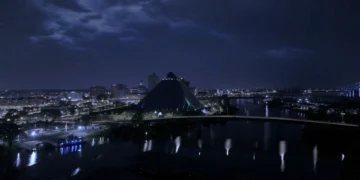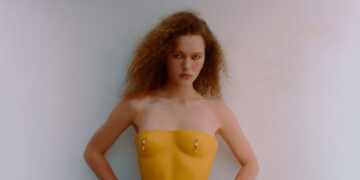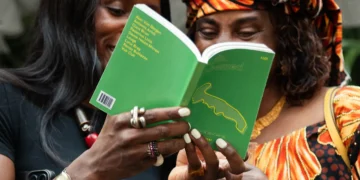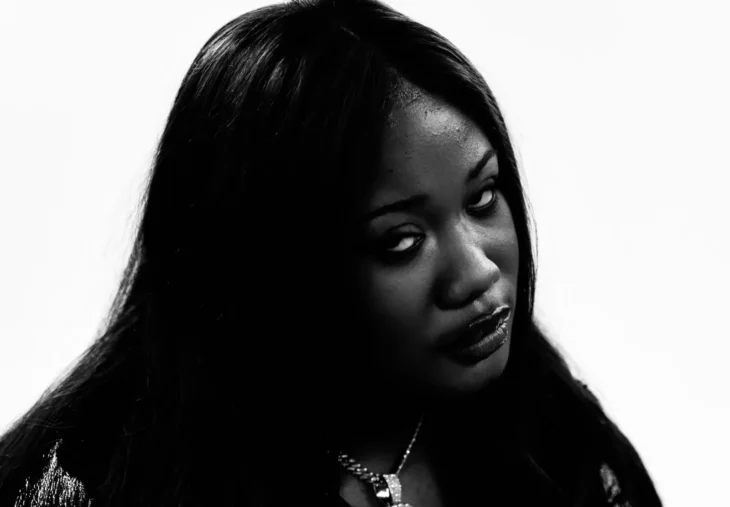
During Berlin Art Week, LAS Art Foundation is presenting two new projects at CANK in Neukölln: Dead God Flow, an audio-visual installation by artist, DJ, and producer Christelle Oyiri, and Foundations, a live event series by the Black art collective CEL. Our DSCENE Editor Borislav Utjesinovic connected with the artist Christelle Oyiri during the exhibition to explore the ideas, inspirations, and cultural narratives behind her Berlin installation “Dead God Flow”
ART
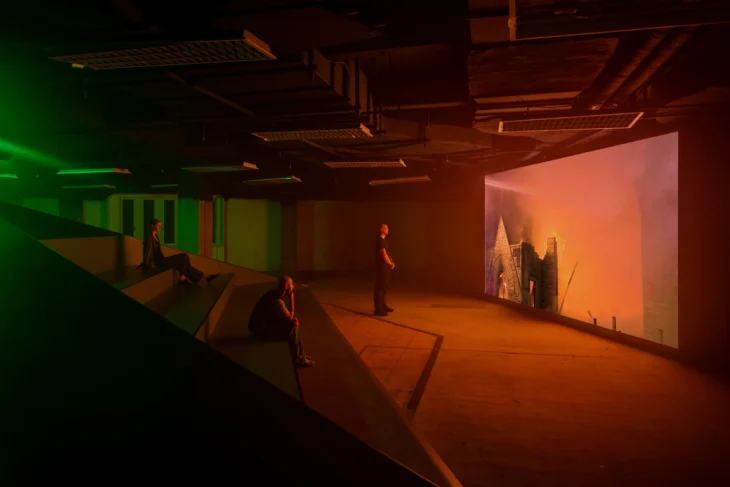
Dead God Flow is Oyiri’s first installation in Berlin. At its center is the video Hauntology of an OG, created in collaboration with Ghanaian-Canadian photographer Neva Wireko. The work was developed during a research trip to Memphis, Tennessee a city whose name also recalls ancient Egypt. Narrated by rapper and poet Darius Phatmak Clayton, the piece links Memphis landmarks such as the modern-day pyramid on the Mississippi River with the pyramids of Giza, drawing parallels between cultural memory, conflict, and sound. The project also revisits the site of Martin Luther King Jr.’s final speech, connecting histories of struggle with contemporary rap as an “architecture of sound.”
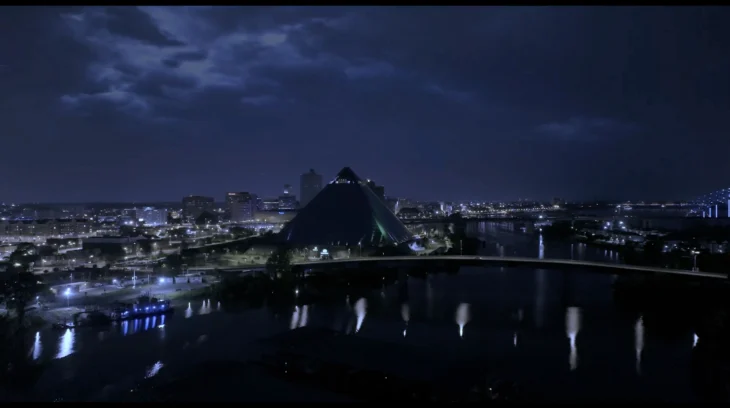
Oyiri describes the installation as “a choreography of image, sound, and presence where the past and future refuse to separate.” The sampled voice of rapper Princess Loko adds another layer, shifting between elegy and resurrection. The work is co-commissioned by LAS Art Foundation and Amant, with support from the Pinault Collection. Running alongside Oyiri’s installation is Foundations, the first international project by CEL, a collective founded by interdisciplinary artists Shannen SP and GLOR1A. CEL grew out of the 2021 exhibition Nine Nights: Channel B at ICA London, and focuses on supporting Black art, music, and creative activism.
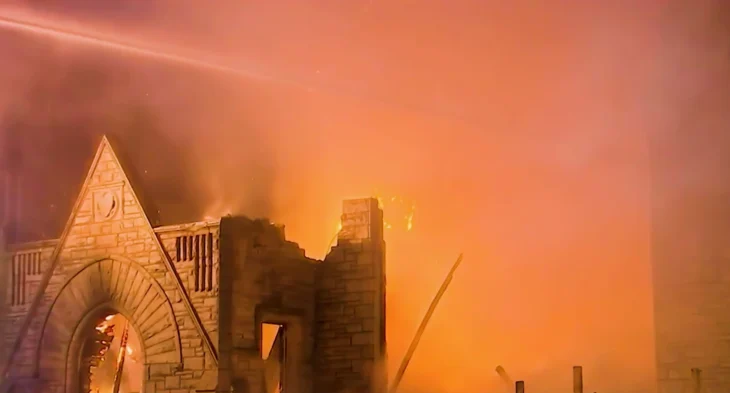
Foundations opened on September 11 with a DJ night featuring Shannen SP and a lineup of local and international artists. The series included performances, workshops, and talks, all designed to explore alternative infrastructures for Black and diasporic artists. CEL described the project as “an autonomous space carved from the Black imagination,” marking the beginning of what is intended to be a long-term, touring initiative. According to Bettina Kames, CEO of LAS Art Foundation, both projects “offer up sonic futurisms that invite us to radically and positively reconsider the future.” CANK, the venue for both presentations, is a former shopping center built in the 1950s in Neukölln. This is the first time LAS has hosted a project there, using the second floor of the building for the installations and events.
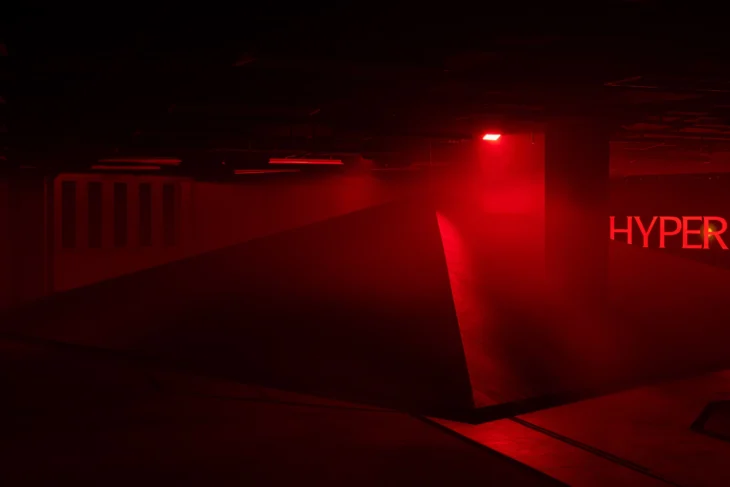
In Hyperfate you talk about being “alive and already dead” What do you mean by that? – What I meant is this idea of accelerated destiny, especially for Black rappers. In rap, your visibility grows so fast, the fame, the money, the chains, but with that visibility comes more danger. Every week there’s news of someone dying young or going to jail, and that’s not something people who listen to other genres really experience in the same way. In rock or pop, yes, artists die young too, but usually from different causes, like overdoses, not gun violence or RICO charges. So “already dead” isn’t about being literally dead, but about how predictable that fate can feel once you step into that spotlight, where the risks multiply just because you’re so visible.
“‘Already dead’ isn’t about being literally dead, but about how predictable that fate can feel once you step into that spotlight, where the risks multiply just because you’re so visible.”
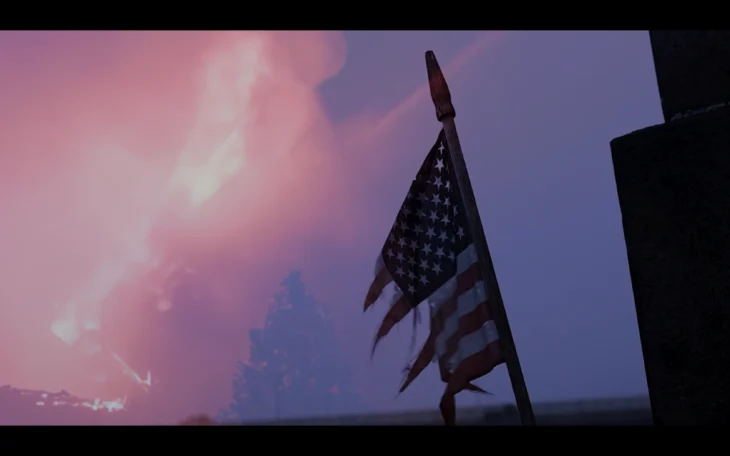
You mentioned traveling to the South in the U.S. What did that trip teach you? – For me it was really important to see the South with my own eyes. In France, there are systems like state funding for the arts, but in the South a lot of that doesn’t exist, instead, people often turn to the church for real help and community. Atlanta was different: it felt like an island of Black excellence, with people like Tyler Perry building studios, big houses everywhere, and the culture you see on shows like Real Housewives of Atlanta. But if you drive 60 or 100 kilometers outside of Atlanta, you’re in a totally different reality, sundown towns, places where people warned me not to go. As someone with Caribbean roots, I also felt a deep connection, because I see the South, the Caribbean, and Africa as linked through shared history. That trip helped me understand the roots of the music and culture I love on a much deeper level.
“Atlanta was different: it felt like an island of Black excellence, with people like Tyler Perry building studios, big houses everywhere, and the culture you see on shows like Real Housewives of Atlanta.”
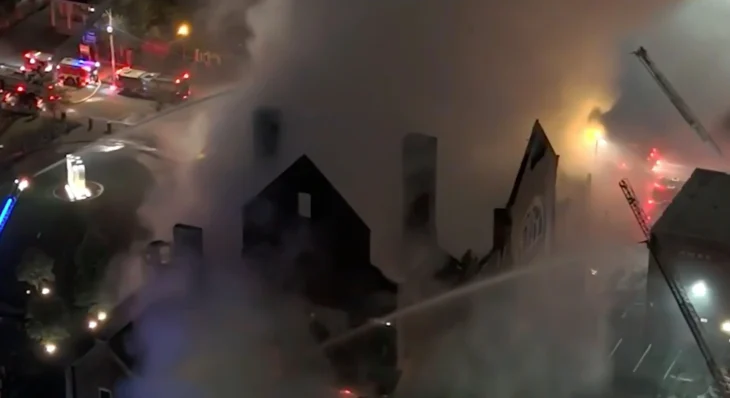
In your show Dead God Flow you reference Nietzsche and spirituality. Why was that important for you? – When Friedrich Nietzsche said “God is dead,” he didn’t mean God literally died. He meant that old systems of belief were collapsing, and people had to find new ones. I feel like we’re in that situation again now. Today, people are investing their energy and devotion into celebrities and artists, like Beyoncé, or streamers like Kai Cenat. Someone can spend twelve hours straight watching a Kai Cenat stream, that’s almost like religious worship. In my work, I try to show how attention, fame, and light take on this sacred quality, but also how they can be dangerous. It’s about asking what our new belief systems are, and how entertainment and necropolitics shape them.
“When Friedrich Nietzsche said ‘God is dead,’ he didn’t mean God literally died. He meant that old systems of belief were collapsing, and people had to find new ones.”

You studied law and philosophy in a very Catholic school before turning to art. How did that shape you? – That period was intense. The school was extremely Catholic, with Latin masses and conservative views on things like abortion and same-sex marriage. It was also racist and hard to fit in. My dad was working three jobs to send me there, so I felt pressure to succeed, which was stressful but also motivating. At the same time, I learned a lot, reading philosophers like Blaise Pascal, Friedrich Nietzsche, and others. That background gave me tools to think critically about belief systems, power, and knowledge. When I moved into art, I used those tools but also wanted to challenge the conservative and exclusive environment I came from. My work now combines both: philosophy and theory, with a personal drive to resist the systems and narratives that shaped my education.
“My work now combines both: philosophy and theory, with a personal drive to resist the systems and narratives that shaped my education.”
